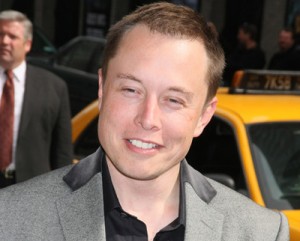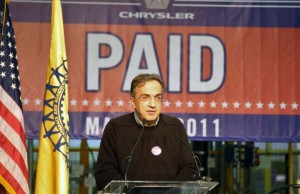It began with a seemingly innocuous statement from Tesla Motors but has quickly escalated into a spitting match with Detroit’s third-largest automaker, Chrysler.
On Wednesday, the battery-car start-up announced that it would pay back the remaining $451.8 million that it owes the U.S. Energy Department nine years ahead of schedule, using money it expects to raise from an upcoming, $1.1 billion stock offering.
That prompted the irrepressible Elon Musk, the constantly tweeting Tesla CEO, to declare that Tesla will become “the only American car company to have fully repaid the government.”
Or will it? Not according to Chrysler.
Indeed, that brings up a touchy subject considering there have been a number of embarrassing failures involving different programs intended to help the auto industry. A123, a major provider of lithium-ion batteries recently went bankrupt, leaving the Department of Energy stuck with millions of dollars in loan losses. And Fisker Automotive, which recently fired three-quarters of its staff, is widely expected to go bankrupt, as well, likely leaving the DoE holding the bag on most of the $192 million of a $529 million loan the company had tapped.
Then there is General Motors which is likely to short the government by billions on the $49.5 billion bailout it received in 2008 and 2009 because most of that debt was converted to equity and GM’s stock price has been running far lower than what would be needed to recover the complete investment. Based on the current stock price and the government’s plan to sell off its remaining stake in the maker by April 2014, the Treasury might lose about $12 billion – though White House officials defend the bailout as a way to have saved perhaps 1 million jobs.
As for Chrysler, which also received a bailout? Spokesman Gualberto Ranieri takes fault with Tesla’s boast. “The information is unmistakably incorrect,” Ranieri wrote on a Chrysler blog. “Question: short memory or short circuit.”
Ranieri drew attention to a well-attended event at the Chrysler Sterling Heights Assembly Plant, north of Detroit, where on May 24, 2011, CEO Sergio Marchionne handed a check to a White House representative, covering the last of the money loaned the maker under President Barack Obama.
“We were encouraged by the fact that someone believed in us,” declared Marchionne, adding “it happens rarely in life you’re given a second chance.”
In his blog post, emphasized Ranieri, Chrysler “repaid (in full and with interest) U.S. and Canadian government loans more than six years ahead of schedule.”
Well, sort of. What the maker sidesteps is the fact that it has just repaid money loaned to the so-called “New Chrysler,” the company that emerged from bankruptcy in mid-2009 leaving behind an assortment of undesirable assets with “Old Chrysler.”
That bankrupt entity was able to sell some of those assets to raise money for debtors and the government, but in the end, a 2011 statement from the Treasury noted that it “is unlikely to fully recover the difference of $1.3 billion owed by Old Chrysler.”
Chrysler officials routinely dismiss that fact by noting Old Chrysler is a “different company” from the one that emerged from Chapter 11 protection with the government’s help. The New Chrysler, they insist, has paid off its debt in full, and even made taxpayers a little money in interest.
Chrysler also applied for some of the loans offered by the DoE to help spur the development of high-mileage, alternative-power vehicles, but eventually withdrew that request.
Rivals Ford and Nissan did receive some of those low-interest loans — $5.9 billion and $1.4 billion respectively. Both expect to repay the loans in full over time.
But the A123 fiasco and the collapse of both Fisker and Michigan-based Vehicle Production Group only added to growing opposition to the Energy Department loan program. The DoE still has $16 billion available under the program but is not expecting to make any further loans. That’s been a setback to several other companies that had hoped to go into business using the cash, including Next Autoworks. The San Diego-based start-up shut down after it was advised it wouldn’t get Energy Department help.



I guess my question would be, is Chrysler still an American care company since Fiat now owns it?
Once again tax payers are defrauded by companies like GM who used the government loans to expand in China. I was all for the loans to save U.S. jobs, not for expansion in China. I was also for loans that required 100% repayment plus interest. The fact that Obama and the other criminals in DC structured these loans with loopholes that allowed these companies to fleece tax payers and use the funds to build in China is a FRIGGING DISGRACE!
So many smoke screens. I notice no mention of the fact that none of the big whatever will have to pay tax on profits for 9 more years. They all received no tax on profits for 12 years as part of their welfare plan. Yet I, a displaced auto employee still have to pay taxes and still have to live with age discrimination from the twirling musk himself.
I also notice no mention of the welfare plan called space x, elons personal laundry.
I also notice no mention of the accomplishments from these welfare corporations regarding the great advances that America received from those billions handed to them for “new energy applications”.
I have noticed however, that those receiving this welfare plan for millionaires still pay the ceo’s far more than any are worth, musk included.
I find this entire affair to be quite disgusting. Perhaps romney was correct.